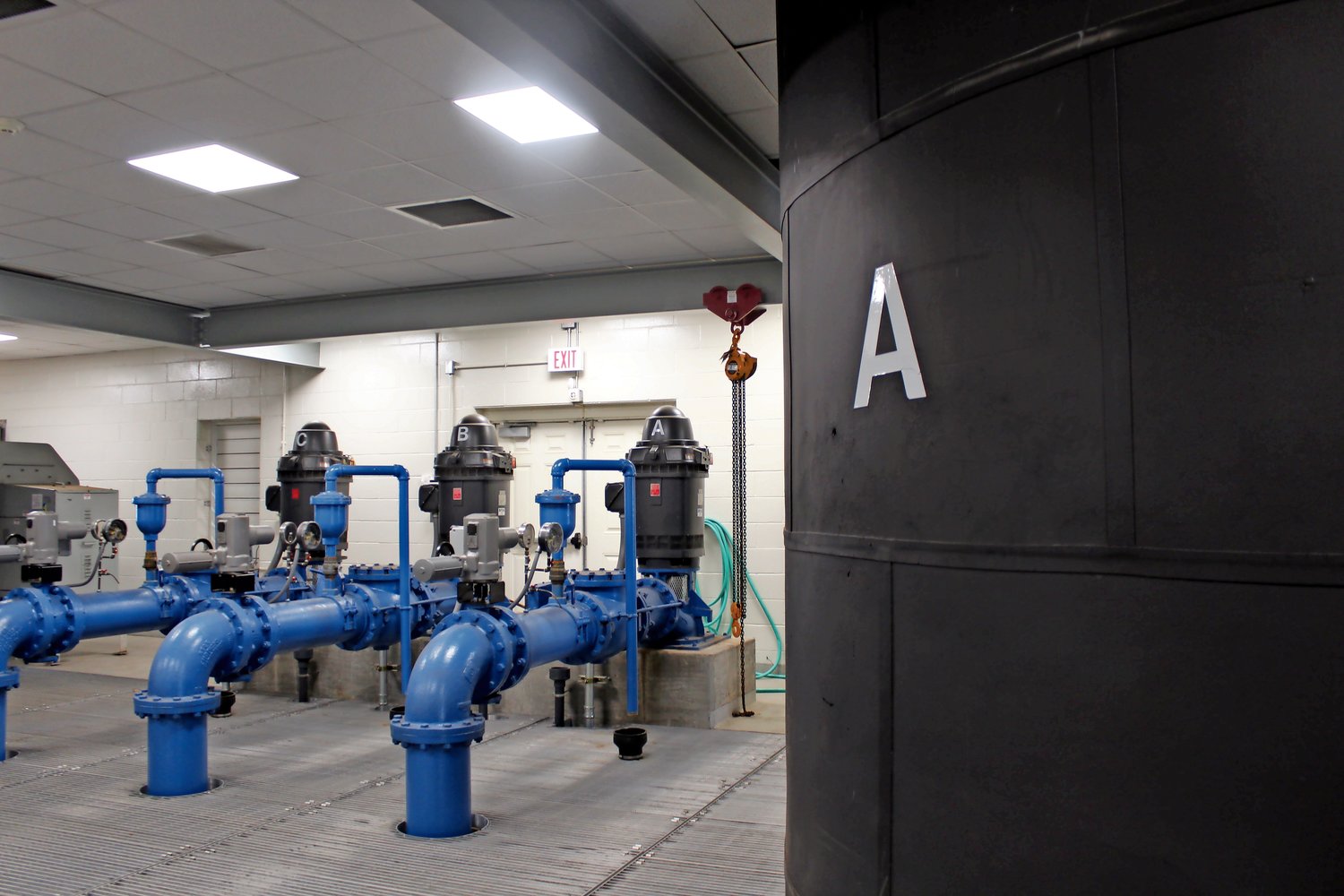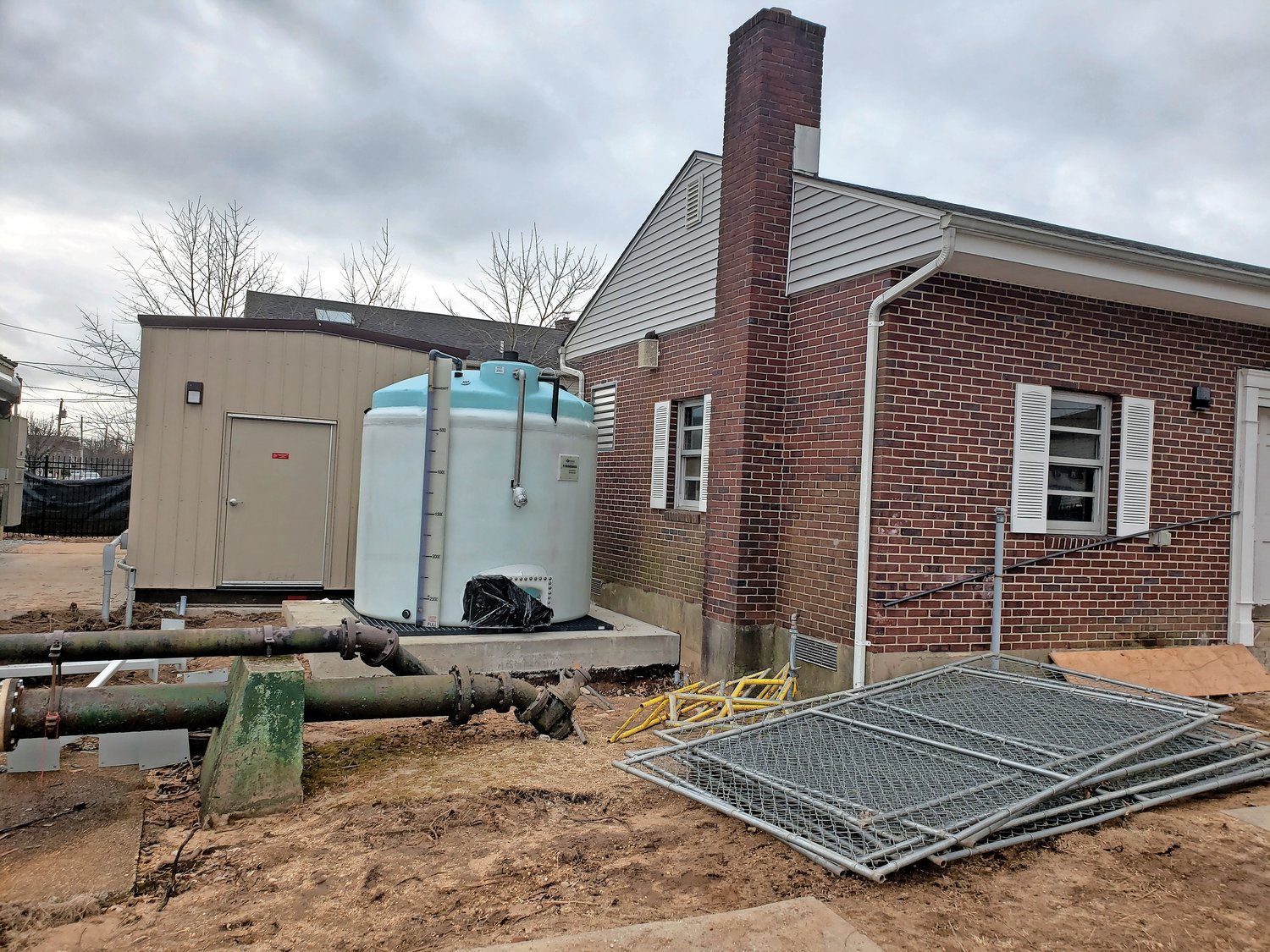Franklin Square, W. Hempstead officials discuss water quality issues
There was a low hum in the Franklin Square Water District’s air-stripper facility on Schroeter Avenue on Jan. 30, as machines removed the volatile organic compounds from water before it reached residents’ homes.
“When the water leaves the facility, there’s no volatiles,” said Scott Schemmer, the district’s assistant superintendent. The machinery, he explained, blows air from the bottom of a tank as water from the wells drips down from the top. Several Wiffle-ball-like structures hanging from the top separate out the volatile compounds and convert them into harmless substances that can be released into the atmosphere. “It legitimately blows the volatiles out of the water,” Schemmer said.
But the air stripper isn’t the only tool the Franklin Square Water District uses to ensure the water it produces is safe for the 20,000 residents it serves between McKinley Avenue in Franklin Square and Marguerite Avenue in Elmont. Officials collect more than 600 samples of the untreated water from the district’s five wells and conduct more than 10,000 tests each year. When they do find contaminants, District Engineer Dennis Kelleher explained at the Franklin Square Civic Association meeting on Jan. 28, they install structures to remove them.
“The district does whatever it can to make sure the water stays safe,” Kelleher told residents, who were concerned about water quality. “At this time, the treatments we have in place are sufficient.”
The air strippers were installed in 2009, and have since removed the low levels of trichloroethene that seeped into the water roughly 50 years ago from industrial contamination plumes. A granular activated carbon filter, which works like a fish-tank filter, according to John Hughes, superintendent of the Franklin Square Water District, has also been in place at its two wells on Theodora Street since 1989. The treatment has removed all of the perfluorooctanoic acid, which can cause cancer, from the wells. Additionally, district officials are proposing to add an air-stripping treatment at the Theodora Street wells to remove low levels of freon 113, and are acquiring an advanced oxidation process system to remove 1.2 micrograms per liter of 1,4-dioxane.
Dioxane is a synthetic industrial chemical that is typically found in personal care products, such as Tide detergent, which contains more than 50,000 parts per billion of the potential carcinogen. It has been found in more than 70 percent of Long Island’s supply wells since 2013.
Under federal guidelines, one liter of water can contain no more than 50 micrograms of the chemical. State officials, however, are proposing setting the standard for dioxane at 1 microgram per liter. “This is the first time I’ve ever seen it go below five,” Hughes told the Herald.
To meet that demand, the district has already received a state grant of $4.12 million for the installation of the advanced oxidation system, and district officials have applied for a roughly $2.75 million bond from the Town of Hempstead to fund the rest. The board is expected to vote on the bond in the next few months, Kelleher said, and once it is approved, the district would be able to install the facility, which would add hydrogen peroxide to the water and shine ultraviolet light on it to remove all traces of dioxane. The water would then be filtered through another granular activated carbon system to remove the hydrogen peroxide that was added.
“The finished product is good water,” Hughes said, adding, “The Franklin Square Water District would not pump water that did not meet standards.”
The West Hempstead Water District, meanwhile, installed a hydrogen peroxide tank to remove dioxane three weeks ago at the water tower in Garden City South. The water district, which also serves Franklin Square, is working to install two wells at that facility.
“Unfortunately, 1,4-dioxane is not easily removed from water,” West Hempstead Water District Superintendent Jason Belle said. “Typical methods, whether it be filtration or anything like that, doesn’t remove it, so we had to come up with what they call the advanced oxidation process.”
The process is only interim, Belle said, adding that it would run from May to September, at which point the wells would be turned off and construction of the permanent system would begin. Belle also said that when it comes to the installation of hydrogen peroxide tanks, engineers stick to the same format for most water districts on Long Island.
“They kind of try to make it as uniform as possible,” Belle said. “Because there’s an influx of all these people ordering things, the manufacturers could make them as similar as possible so that there isn’t a long delay, because we’re one of many districts that deal with this.”
As for testing water quality, the West Hempstead Water District checks its water quarterly for dioxane. Belle, who was appointed superintendent last month, said his predecessor, Robert York, instituted a more frequent testing program to address residents’ concerns.
“We’re happy and hopeful to have treatment up and running this summer,” Belle said. “While this construction is only temporary, we will beautify the facility once the pumping season is over.”
Anyone with further questions for the Franklin Square or West Hempstead water districts can submit an inquiry at https://bit.ly/2S7pgp9.

 50.0°,
Overcast
50.0°,
Overcast 







